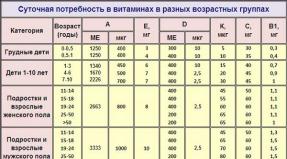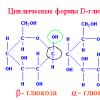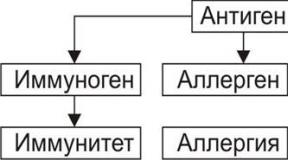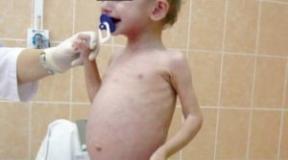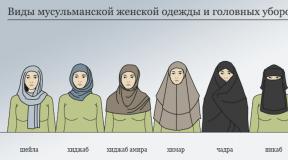World Bank and its activities. World Bank Databases History of the World Bank
The World Bank ( World Bank) is an international financial institution specializing in long-term lending, project financing, capital market operations. It was created under the Bretton Woods agreements in 1944. It carries out large-scale investment financing programs in developing countries and transition economies. The headquarters is located in Washington (USA).
The structure of the World Bank (Finance) databases (worldbank.org) useful in financial market analytics:
World Development Indicators(Database "World Development Indicators");
Global Financial Development(Database "Global Financial Development");
Public Sector Debt Statistics Centralized Database(Central Database of Public Debt Statistics) in cooperation with the IMF (IMF);
Quartely External Debt Statistics (Quarterly External Debt Statistics Database) with the IMF.
World Development Indicators. The World Development Indicators database provides Free access; data export to Excel, graphs, maps; data for more than 200 jurisdictions and groups of countries;
- world prices for the main types of goods, dynamics of commodity price indices;
- statistics of money, banks, credit, public finance, balance of payments, GDP;
- other multiple statistics (a characteristic of the level of financial and economic development).
Sample sample (data at the end of the period):
|
Bank capital / Assets, % |
||||
|
Broad money, % of GDP |
||||
|
Central government debt, % of GDP |
||||
|
Claims on other sectors of the domestic economy, % of GDP |
||||
|
Export of goods and services, % of GDP |
||||
|
GDP growth rate per year, % |
||||
|
GDP per capita at current prices, USD |
||||
|
Savings rate, % of GDP |
It is impossible to understand what is happening on local exchanges without answering questions about how it feels and how fast the macroeconomics is developing (or, conversely, degrading)? How saturated is it with money, banks, debts and other financial assets? What part of the added value is given to development? The answers to these and other questions create a unique feeling of either “project success”, “growth atmosphere”, “market maturity”, when exchanges are growing by leaps and bounds, or, on the contrary, a world of risks, high volatility, speculative expectations and short time horizons for investment.
In other words, it is impossible to build successful, confident and steadily growing capital and money markets in a single country if its economy and finances have a shaky, seismically active foundation. It is impossible to evaluate the market situation without having in mind how well the macroeconomic and financial house in which the exchange is created is organized.
It seems that these arguments are trivial, that they are obvious. But the practice of Russian analytics, the years of victorious reports, when, on the contrary, it was necessary to think about what is happening, prove the opposite.
Global Financial Development. Database “Global Financial Development Provides Free Access; data export to Excel; data for more than 200 jurisdictions, countries and groups of countries;
- time horizons - from 1960 to the present (actual data), annual data;
- financial depth (the degree of saturation of the economy with money, financial instruments, institutions and markets), the availability of financial services, the stability of financial institutions and markets, the effectiveness of financial intermediation.
Sample sample, %
|
Concentration of banking assets at five banks |
||||
|
Assets of insurance companies / GDP |
||||
|
Interest margin on deposit loans |
||||
|
Market capitalization of the ten largest companies / Market capitalization of the entire market |
||||
|
Mutual fund assets / GDP |
||||
|
Number of listed companies per 10,000 people, units |
||||
|
Assets pension funds/ GDP |
||||
|
Assets of foreign banks / Total banking assets |
||||
|
Number of banks with foreign participation / Number of banks - total |
||||
|
Equity market capitalization / GDP |
||||
|
Turnover on transactions in the stock market / GDP |
||||
|
Turnover in the stock market (Turnover on transactions in the stock market / Capitalization) |
||||
|
Turnover on transactions of the ten most traded companies / Turnover on transactions on the stock market |
||||
|
Stock index volatility |
The higher the financial development, the more the economy is saturated with money, financial instruments (credits, bonds, stocks, derivatives, structured products, etc.) and financial institutions, the more accessible financial services are to the population, the greater the operational capacity is for investments to reach not only to the ordinary sectors of the economy, but also to that part of it that is usually called “high-tech”, “innovation”, venture capital and start-ups, small capitalization companies, to those segments of the economy where its future is determined. And, of course, the higher the financial development, the deeper the exchange markets, the more stable they are and the more competitive they are in the fight against other markets for issuers, investors and trading activity, the larger the exchange.
In this regard, the analysis financial development in dynamics, in comparison with other countries, is something without which it is impossible to imagine a balanced assessment of the market situation, taking into account the fundamental factors that form it.
Public Sector Debt Statistics Centralized Database. Centralized database of public debt statistics, shared with the International Monetary Fund, provides free access; data export to Excel; data for over 60 jurisdictions and country groups; generation of reports according to any specified criteria;
- time horizons - from 1995 to the present (actual data), annual, quarterly data;
- public debt, debt of state corporations, public sector (volume and structure of debt by currency, terms, financial instruments, countries of origin of creditors, etc.).
Sample sample (data at the end of the period, the structure of gross central government debt by currency in which it is denominated), billion dollars:
Quarterly External Debt Statistics. The Quarterly External Debt Statistics Database, shared with the International Monetary Fund, provides free access; data export to Excel; data for more than 100 jurisdictions and groups of countries; generation of reports according to any specified criteria;
- time horizons - from 2002 to the present (actual data), annual, quarterly data;
- external debt by subjects (government, monetary authorities, banks, non-financial sector), by types of instruments, terms; debt service burden.
Sample sample (data at the end of the period, gross external debt), billion dollars:
External debt is able to "bury" the most successful projects for the development of financial markets. This has been proven many times over by external debt crises in emerging markets, including Russia. In August 1998, Russian stock exchanges were destroyed, left without liquidity, stock indices reached 7-8% of their maximum values. Foreign capital fled the market, which for several years brought tens of percent per annum in foreign currency, along with a "soap bubble" in the market of Russian shares denominated in US dollars.
Exactly the same story was observed in Argentina in the early 2000s, in Greece in 2010-2012. Therefore, the state and dynamics of public debt, especially in the part that does not depend on domestic investors (the state always finds ways to “deal with them”), are critical areas of study for a b financial analyst. What part of the external debt depends on non-residents and what kind of non-residents are they, in what currency, with what terms of investments and to what extent are they highly speculative, playing on the difference in foreign exchange yields between markets? What are the credit, interest rate, currency and market risks that lie on the public debt, especially in the part that is traded on the stock exchange?
The answers to these and other questions related to public debt are of fundamental importance to the financial analyst, especially if he does not limit himself to indifferent commentary on the current flow of events.
Russia overtook South Korea and rose from 12th to 11th place in the ranking of economies by GDP in 2017, according to updated data from the World Bank. Over the year, Russian GDP in dollar terms at current prices increased by almost $300 billion, from $1.28 trillion to $1.58 trillion. GDP South Korea rose from $1.41 trillion to $1.53 trillion.
Russia in this list is far ahead of its three BRICS partners - China (2nd), India (6th) and Brazil (8th), Brazil is the closest with a margin of $478 billion. only two changes: India overtook France to sixth place, and Brazil overtook Italy to eighth (see infographic).
The World Bank relies on official Rosstat data, which includes Crimea and Sevastopol. "Based on these data, the World Bank does not intend to make any judgments regarding the legal or other status of the affected territories," the institute said. In 2016 (latest available data), the total GRP of Crimea and Sevastopol amounted to approximately 380 billion rubles, or $6 billion at the current exchange rate.
Fight for a place in the top five
More suitable for international comparisons is GDP at purchasing power parity (PPP, equalizes the purchasing power of currencies different countries). It is according to this indicator that Russia should enter the top five countries by 2024, Vladimir Putin set the task. By September 1, the Ministry of Economic Development and the Ministry of Finance were instructed to develop a plan to fulfill this task.

At the end of 2017, Russia increased GDP at PPP in current prices from $3.64 trillion to $3.75 trillion, according to the World Bank data, but remained, like a year ago, in sixth place. Fifth - Germany, from which Russia lagged behind by $ 445 billion. The gap from Germany is 4-5%, the goal is for the growth of the Russian economy to exceed the growth of Germany by 4% over the next six years, Economic Development Minister Maxim Oreshkin explained in May. “The German economy is not an economy that is growing at a superfast pace. Therefore, we must, of course, show higher rates of economic development and bypass it in this rating,” the minister said. According to Rosstat, in 2017, Russia's GDP grew by 1.5%. This estimate can be improved by 0.3 p.p. due to the recent revision by Rosstat of the dynamics of industrial production over the past year, the Ministry of Economic Development reported on July 12. In 2018, GDP growth will be 1.9%, in 2019 - 1.4%, follows from the latest macro forecast of the Ministry of Economic Development. The agency updated it, taking into account the April expansion of US anti-Russian sanctions, the tasks set by the May decree, as well as the increase in the VAT rate from 2019, which will lead to an additional increase in prices.
The International Bank for Reconstruction and Development, better known as the World Bank, is one of the world's largest sources of development assistance. Its main purpose is to help the poorest groups in the population and the poorest countries. The World Bank helps developing countries fight poverty and achieve stable, sustainable and equitable economic growth.
The World Bank was founded in 1945 with the primary mission of helping Western Europe recover from World War II. Following the rebuilding and rebuilding of Europe, the scope of the World Bank's activities shifted to providing support to developing countries. In the 1950s It turned out that poor developing countries cannot afford to borrow the funds necessary for the development of their economies on the terms of the World Bank and need to soften credit conditions. Thus, in 1960, the International Development Association (IDA) was created as part of the World Bank, which provides interest-free loans. IDA funds come from contributions from rich countries, as well as repayments of previously issued loans.
Currently, the World Bank includes 184 countries. The headquarters is located in Washington, USA.
Over the years of presence in the global economy and social sphere, the priorities of the World Bank have undergone significant changes. In 1980, 21% of the Bank's loans were invested in the electricity sector. Today this figure is only about 7%. At the same time, the amount of resources directly allocated to support the development of health care, education, pensions and other social services has increased from 5% in 1980 to 22% today. The World Bank, whose members are 184 countries, has adopted new approach to the development process, addressing new challenges, including gender development, community-led development, indigenous peoples' issues, and efforts to create vital infrastructure for the poor.
Organizational structure of the World Bank
The World Bank Group is made up of five closely related institutions owned by member countries. Each of these institutions plays a specific role in tackling poverty and raising the standard of living of the population. The World Bank conducts its business through Vice Presidential Departments (VPDs) that deal with specific regions or sectors or fight poverty and promote economic development.
The World Bank is run as a kind of cooperative society, whose shareholders are the member countries of this organization. The number of shares in each of the countries is approximately calculated depending on the size of the economy. The largest shareholder is the United States (16.41 percent of shares), followed by Japan (7.78 percent), Germany (4.49 percent), the United Kingdom (4.31 percent) and France (4.31 percent). The remaining shares are distributed among the remaining Member States.
The member countries of the World Bank are represented by the Board of Governors. Typically, the governors are government officials, such as the Minister of Finance or the Minister of Development. The Board of Governors is supreme body defining the policy of the Bank. The Board meets once a year during the Annual Meetings of the Bank. Since these ministers meet only once a year, specific powers are delegated to executive directors based directly at the Bank's headquarters. Each member country of the World Bank Group is represented by an Executive Director. The five Executive Directors are nominated by the five largest shareholding Member States—the United States, Japan, Germany, France and the United Kingdom—and the remaining Member States are represented by 19 Executive Directors.
By tradition, the President of the World Bank is a citizen of the United States, which is the largest shareholder of the Bank. The President is elected for a five-year term and is eligible for re-election, chairs meetings of the Board of Directors, and is responsible for the overall direction of the Bank's business. The current President of the World Bank is Mr. Paul Wolfowitz, who took office in June 2005.
The Bank employs about 10,000 people, including economists, engineers, specialists in education, as well as in such areas as ecology, the financial analysis, anthropology, and many others. The Bank's employees are citizens of 160 countries, and more than 3,000 people work in permanent representations of the Bank in member countries.
Areas of activity of the World Bank
1. The World Bank is the largest international source of funding for education
Since 1963, when education funding was launched, the World Bank has provided about $31 billion in loans and credits and is currently funding 158 education projects in 83 countries. The Bank works closely with national governments, UN agencies, donors, nongovernmental organizations and other partners to help developing countries reach the goal of universal education. The goal is that by 2015, all children, especially girls and children from low-income families, are enrolled in primary school and have the opportunity to complete primary education. A good example of the Bank's education loans is India's Neighborhood School Primary Education Program, which focuses on girls in areas where the female literacy rate is below the national average. To date, the program, with up to $1.3 billion in Bank funding, has reached more than 60 million students in 271 low literacy areas in 18 of India's 29 states. Bank-financed projects in Brazil, El Salvador, and Trinidad and Tobago focus on strengthening the role of local communities in improving the quality of education by empowering local communities to evaluate the performance of local schools and teachers.
2. The World Bank is the largest international source of funding for the fight against HIV/AIDS
Every day, 14,000 people become carriers of the HIV virus; and half of them are people aged 15 to 24 years. HIV/AIDS is rapidly reversing many of the gains made by developing countries over the past 50 years in the process of social and economic development. Working with the United Nations program UNAIDS, which coordinates the global response to the epidemic, the World Bank has committed more than $1.7 billion to combat the spread of HIV/AIDS worldwide. The Bank assured countries that no country that developed an effective HIV/AIDS strategy would be left without funding and, together with African governments, developed and launched a regional HIV/AIDS program (MAP), in which allocates significant amounts of funds to public organizations and local communities.
Many countries have developed qualitatively new approaches to combating the spread of HIV/AIDS, which are now being adopted by other countries and adapted to local conditions. In 2002, MAP provided Africa with $1 billion to help scale up national prevention, treatment and care programs. In addition, the Bank has committed $155 million to the Caribbean for HIV/AIDS and continues to support programs in this area in other regions.
3. The World Bank is one of the largest international sources of funding for health programs
Providing basic health care and nutrition to the poor is critical to reducing poverty and promoting economic growth. Despite significant progress made by many countries over the past few decades, challenges remain. Of the 11 million children who die each year in developing countries, about 70 percent die from infectious diseases(such as pneumonia, malaria, diarrhoea, measles and HIV/AIDS) and malnutrition. The World Bank disburses an average of $1 billion annually in new loans to finance projects in developing countries related to health, nutrition, and population. Bank funding is helping fight malaria in 46 countries and tuberculosis in 30 countries. In China, the Bank has helped provide more than 90 percent of families with iodized salt, which has contributed to a significant reduction in miscarriages and stillbirths, physical deformities and mental retardation, problems resulting from iodine deficiency. In addition, in Senegal, the Bank helps mothers prevent and address child malnutrition and promotes integrated preventive and curative measures.
4. The World Bank strongly supports debt relief
In 1996, the World Bank and the International Monetary Fund (IMF) launched the Heavily Indebted Poor Countries (HIPC) Initiative, which is the first A complex approach to alleviate the debt burden of the world's poorest, most indebted countries. Currently, 26 countries are receiving debt relief assistance, and this assistance is projected to reach $40 billion over time. Combined with other debt relief mechanisms, the HIPC Initiative will reduce the external debt of these countries by two-thirds, to levels well below the average for all developing countries. As part of this initiative, countries are trying to refocus their budget priorities on critical areas social development and human resource development. For example, Rwanda has set targets for increasing the number of children enrolled in primary school and hiring teachers. Honduras plans to provide maternal and child health and basic health care to at least 100,000 people in poor communities. In Cameroon, resources are being used to improve the response to HIV/AIDS, in particular by educating high-risk populations about the importance of condom use.
5. The World Bank is one of the largest international sources of funding for biodiversity conservation programs
Since 1988, the Bank has become one of the largest international sources of funding for biodiversity conservation projects. While biodiversity loss is a global problem, rural populations in developing countries are the first to suffer, as they are most dependent on environment providing them with food, a roof over their heads, medicines, livelihoods, work, and also contributing to the preservation of the identity of the culture of the local population. That is why the World Bank is partnering with Conservation International, the Global Environment Facility, the MacArthur Foundation and the Government of Japan to create a fund that will help better protect biodiversity hotspots in developing countries. These most endangered regions, which make up only 1.4 percent of the earth's surface, are home to about 60 percent of all terrestrial species. Addressing environmental issues is an integral part of the Bank's strategy to reduce poverty. In addition to conducting potential environmental impact assessments and taking precautionary measures, the focus of the new strategy is climate change, conservation of forest and water resources and biodiversity. The World Bank's portfolio of projects with environmental targets currently stands at $14 billion.
6. The World Bank is more engaged than ever with its partners
For the past six years, the World Bank has been working with a wide range of partners in the fight against global poverty, such as the World Bank wildlife to conserve forests, and with the public and private sectors to create a Prototype Carbon Fund that will help mitigate the effects of global warming. In addition, the Bank collaborates with the Food and Agriculture Organization of the United Nations (FAO) and the United Nations Development Program (UNDP), sponsoring the well-known Advisory Group on International Research in Agriculture that uses the latest advances in science to fight malnutrition and reduce poverty, improve nutrition and health of the population and protect the environment.
Through the Advisory Group on Assistance to the Poorest (CGAP), the World Bank works with donors and international financial institutions to empower microfinance institutions to provide financial services to the poorest people. Thanks to the efforts of the partnership to fight onchocerciasis (“river blindness”), more than 600,000 cases of the disease have been prevented, 25 million hectares of land have been freed up for cultivation, and more than 22 million people are cured of the disease every year.
7. The World Bank plays a leading role in the fight against corruption globally
Corruption is one of the problems hindering development: it further worsens the situation of the poor, depriving public resources of those groups of the population who need them most. Since 1996, the Bank has implemented 600 anti-corruption programs and governance initiatives in nearly 100 client countries. These initiatives range from government officials filling out declarations showing their income, property and origin, to upgrading the skills of judges and training journalists in investigative journalism. At present, almost one-quarter of all new projects include components related to public spending and financial reform. More importantly, the Bank's commitment to eradicating corruption has spurred a truly global fight against corruption. The World Bank strives to fully integrate efficiency measures government controlled and the fight against corruption, into the planning process and operating activities. In addition, the Bank is committed to making efforts to eliminate any opportunity for corruption in the projects it finances. Over the past four years, the Bank has established strict procurement rules and procedures, anti-corruption principles and opened an anonymous “ hotline”, which can be used to report facts of corruption. As of July 2002, 77 firms and individuals were declared ineligible by the Bank to enter into contracts for Bank-financed projects.
8. Civil Society Plays an Increasingly Important Role at the World Bank
More than two-thirds of the development projects approved by the Bank last fiscal year are implemented with the active participation of nongovernmental organizations (NGOs), and most of the country assistance strategies were developed by the Bank in consultation with civil society. The Bank's staff currently work in 70 of the organization's offices around the world, interacting with the public and NGOs in areas ranging from education and HIV/AIDS to environmental protection. In South Asia, the Bank is consulting with civil society to develop gender development strategies in countries of Eastern Europe consultations are being held with civil society organizations on issues of assistance to address the consequences of armed conflicts and improve the effectiveness of public administration, and in Latin America the opportunities created by the reform and social consequences reforms. One notable example of civil society involvement in Bank projects is Timor Leste, where the Community Empowerment and Local Governance Project supports democratically elected local village councils that include young people, women, religious and farmer groups and involved in the repair of roads, providing the population drinking water and the resumption of economic activity through community-led projects at the local level.
9. The World Bank helps countries emerging from armed conflict
The Bank currently works in 40 countries affected by armed conflict, supporting international efforts to help affected populations, restore peaceful development and prevent new outbreaks of violence. In doing so, the Bank is working on a range of challenges, such as reopening economic activity, investing in war-torn regions, rebuilding war-damaged infrastructure, and targeting programs to focus primarily on the most vulnerable groups such as widows and children. In addition, the Bank supports efforts to disarm, demobilize and reintegrate former members of armed groups into civilian life, as well as initiatives to detect mines and warn the population of their presence. Large-scale and groundbreaking projects financed by the Bank include infrastructure reconstruction and local empowerment in Afghanistan, re-education of street children in the Democratic Republic of the Congo, local development projects in southern Serbia, training of new civil servants in East Timor, and programs in Haiti , the purpose of which is to achieve public consent and which are implemented with the participation of citizens of the country.
10. The World Bank is responsive to the needs of the poor
Interviews with 60,000 poor people in 60 countries, as well as the experience of our daily work, have taught us that poverty is more than income inequality or low growth rates. community development. Poverty is when the poor do not have the opportunity to express their opinion, being deprived of the right to vote, or the ability to defend their interests, when they are not protected from abuse and corruption. Poverty is the absence of elementary freedoms, such as freedom of action, freedom of choice, lack of opportunities. We believe that a person living in poverty should not be treated as a burden or a liability, but as a productive asset that can contribute more than anyone else to the eradication of poverty. A socio-economic empowerment approach to poverty reduction puts the poor at the center of the development process and creates an environment that empowers poor men and women to take charge of their lives, provide them with access to information, and enable them to engage the poor in development and provide it Active participation in this process, ensuring accountability and capacity building in the field. The Bank currently finances community-driven development projects with more than $2.2 billion in funding. In Indonesia, 15,000 villages and communities are putting together their own proposals for local funding, while in Benin, women are joining forces to protect forests so they can be used as a source of income, not just fuel.
Russia has come close to the top 10 economies in the world in terms of GDP, according to new data from the World Bank. In terms of GDP, taking into account purchasing power parity (benchmark of the May decree), Russia remains outside the top five
Photo: Vitaly Ankov / RIA Novosti
Russia overtook South Korea and rose from 12th to 11th place in the ranking of economies by GDP in 2017, according to updated data from the World Bank. Over the year, Russian GDP in dollar terms at current prices increased by almost $300 billion, from $1.28 trillion to $1.58 trillion. South Korea's GDP rose from $1.41 trillion to $1.53 trillion.
Russia in this list is far ahead of its three BRICS partners - China (2nd), India (6th) and Brazil (8th), Brazil is the closest with a margin of $478 billion.
In the top 10 economies, there were only two changes: India overtook France to sixth place, and Brazil overtook Italy to eighth ( see infographic).

The World Bank relies on official Rosstat data, which includes Crimea and Sevastopol. “Based on these data, the World Bank does not intend to make any judgments regarding the legal or other status of the affected territories,” the institute said. In 2016 (latest available data), the total GRP of Crimea and Sevastopol amounted to approximately 380 billion rubles, or $6 billion at the current exchange rate.
Fight for a place in the top five
More suitable for international comparisons is GDP at purchasing power parity (PPP, equalizes the purchasing power of currencies of different countries). It is by this indicator that Russia should enter the top five countries by 2024, Vladimir Putin. By September 1, the Ministry of Economic Development and the Ministry of Finance were instructed to develop a plan to fulfill this task.

At the end of 2017, Russia increased GDP at PPP in current prices from $3.64 trillion to $3.75 trillion, according to the World Bank data, but remained, like a year ago, in sixth place. Fifth is Germany, behind which Russia is $445 billion behind.
The lag behind Germany is 4-5%, the task is to ensure that over the next six years the growth of the Russian economy by 4% exceeds the growth of Germany, in May the Minister of Economic Development Maxim Oreshkin. “The German economy is not an economy that is growing at a superfast pace. Therefore, we must, of course, show higher rates of economic development and bypass it in this rating,” the minister said.
According to Rosstat, Russia's GDP grew by 1.5% in 2017. This estimate can be improved by 0.3 p.p. due to the recent revision by Rosstat of the dynamics of industrial production over the past year, the Ministry of Economic Development reported on July 12. In 2018, GDP growth will be 1.9%, in 2019 - 1.4%, and from the latest macro forecast of the Ministry of Economic Development. The agency updated it, taking into account the April expansion of US anti-Russian sanctions, the tasks set by the May decree, as well as the increase in the VAT rate from 2019, which will lead to an additional increase in prices.
Read also...
- How to cook semolina porridge in milk and water without lumps correctly and how much: recipes and proportions with photos and videos, including for children In what dishes should semolina be cooked
- The most famous national Ukrainian dish
- The history of mushroom picking in Russia
- Birthday May 5 Characteristics of a man

